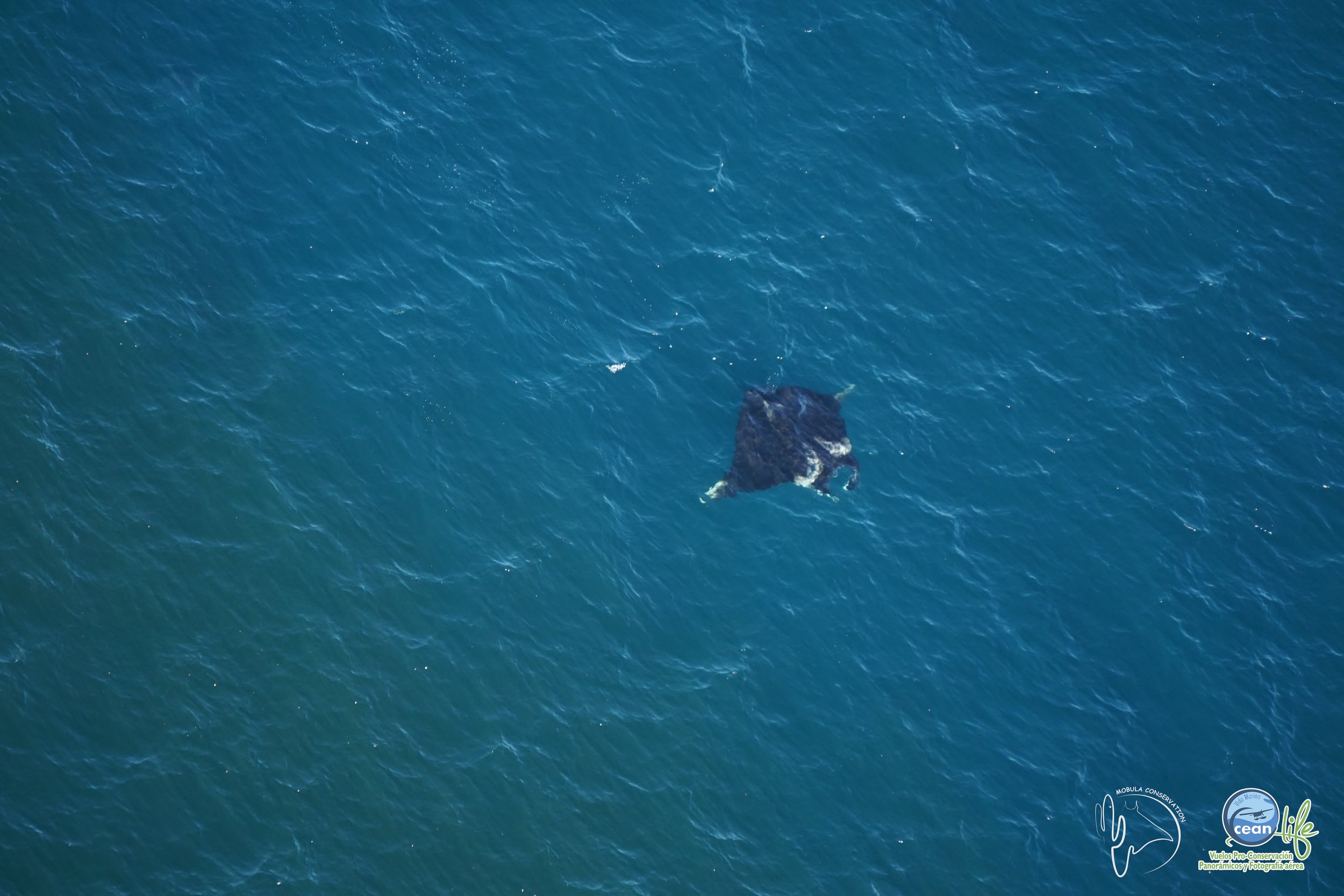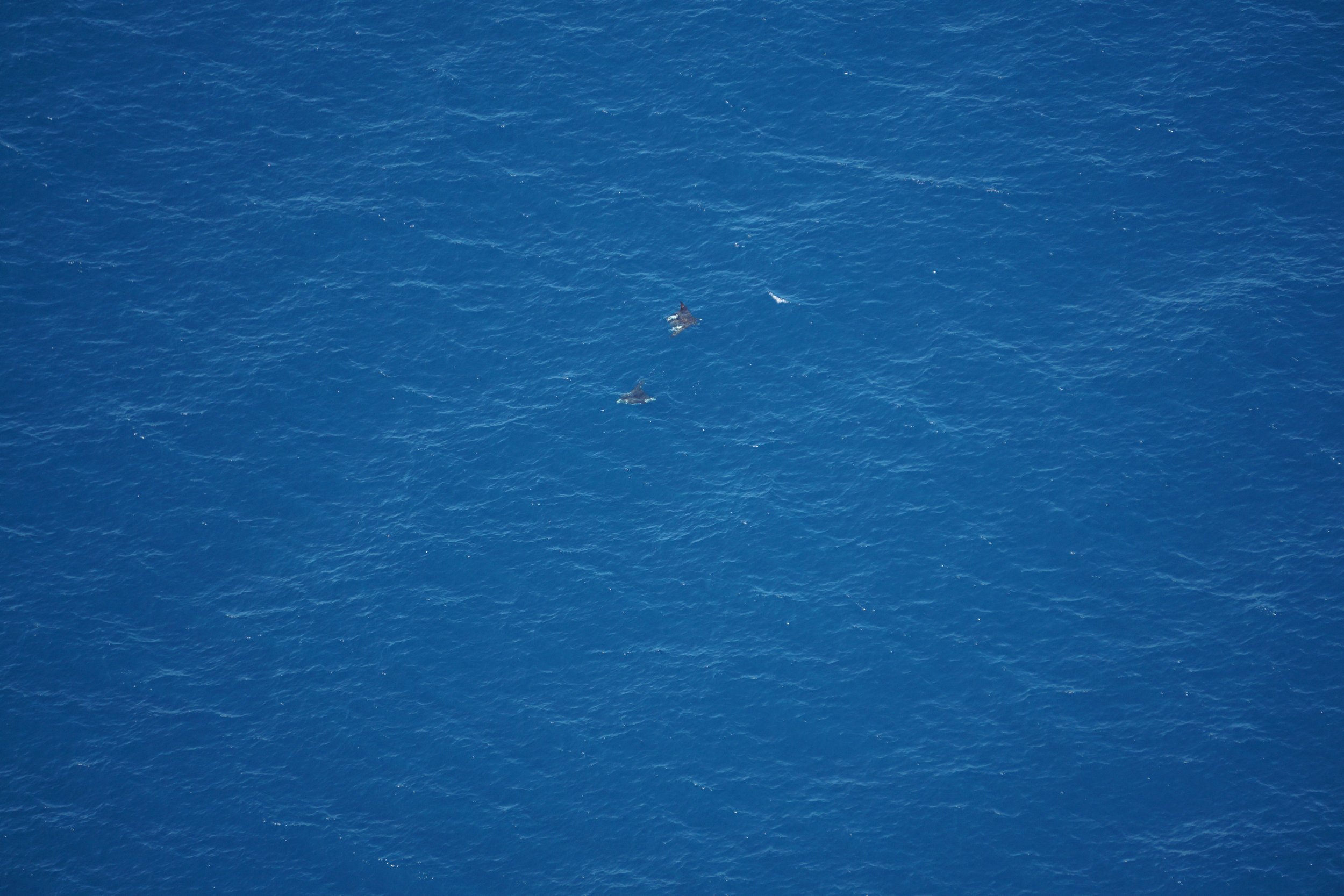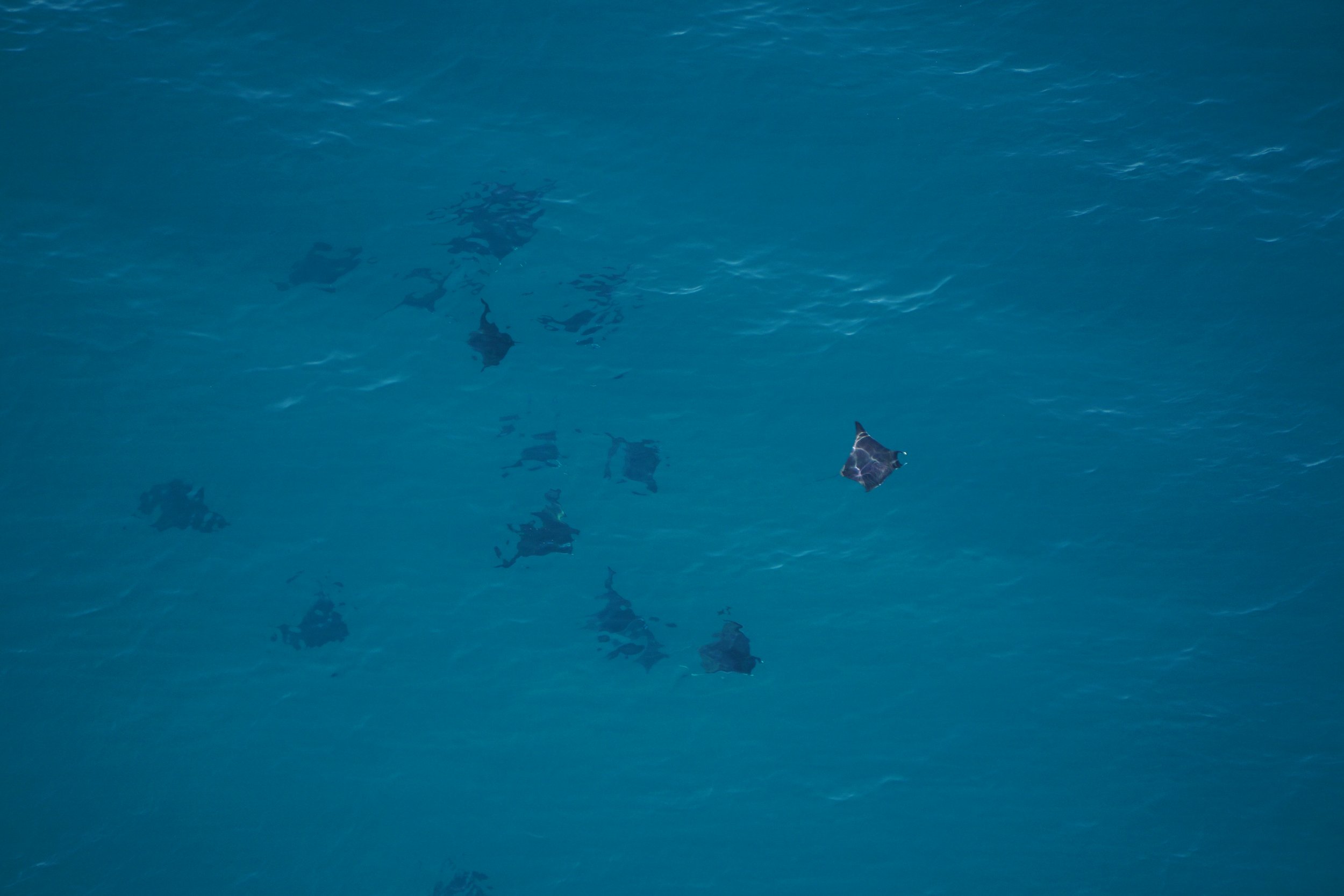Bycatch mitigation from the sky: using helicopter communication for Mobulid conservation in tropical tuna fisheries
March 2024
Jennifer L. Waldo, Ernesto Altamirano-Nieto, Donald Croll, Marta D. Palacios, Nerea Lezama-Ochoa, Jon Lopez, Gala Moreno, Stefany Rojas-Perea & Melissa R. Cronin
Keywords: Purse seine • Management • Eastern Pacific Ocean • Stakeholder Knowledge • Elasmobranch • Conservation Technology
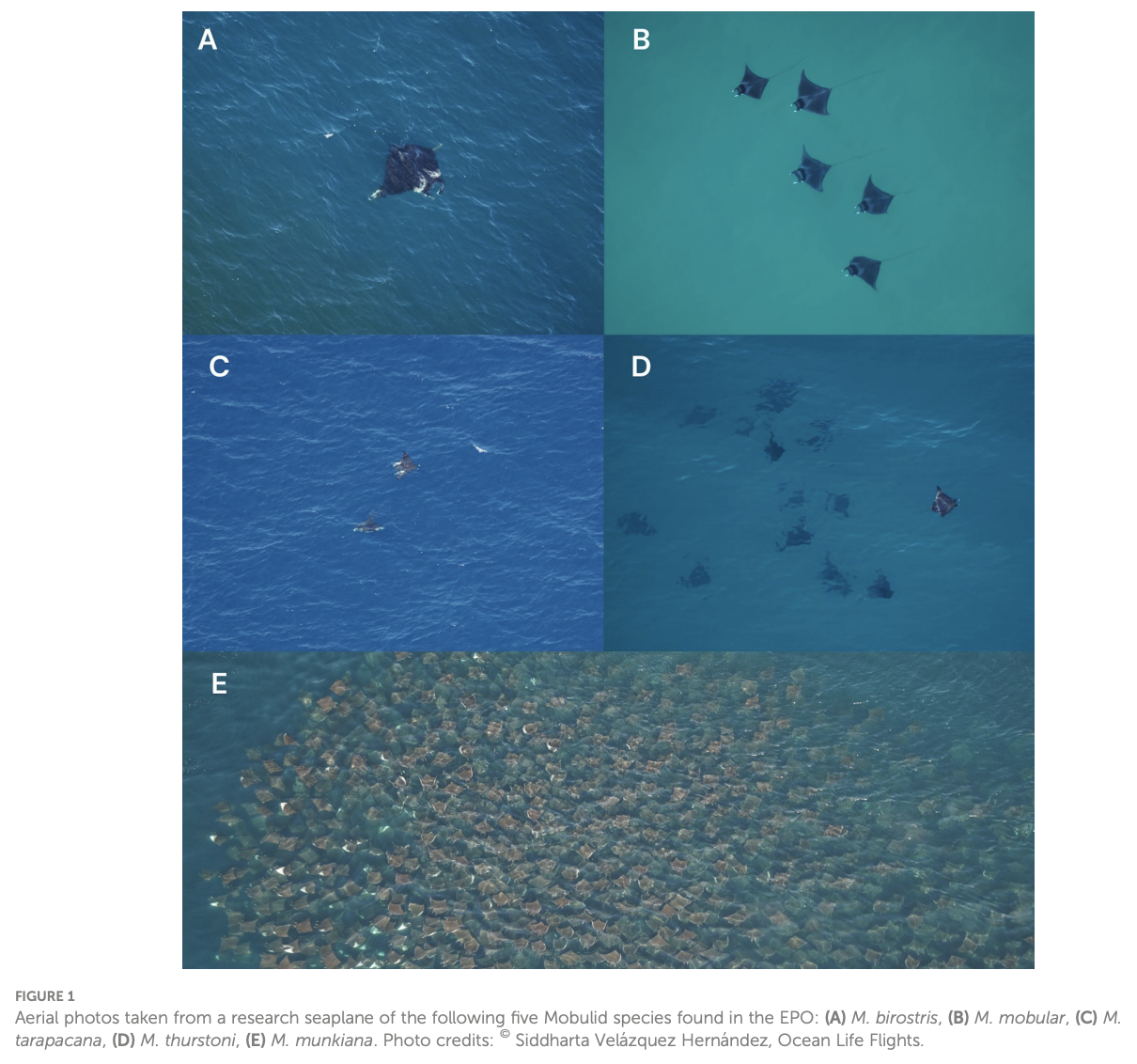
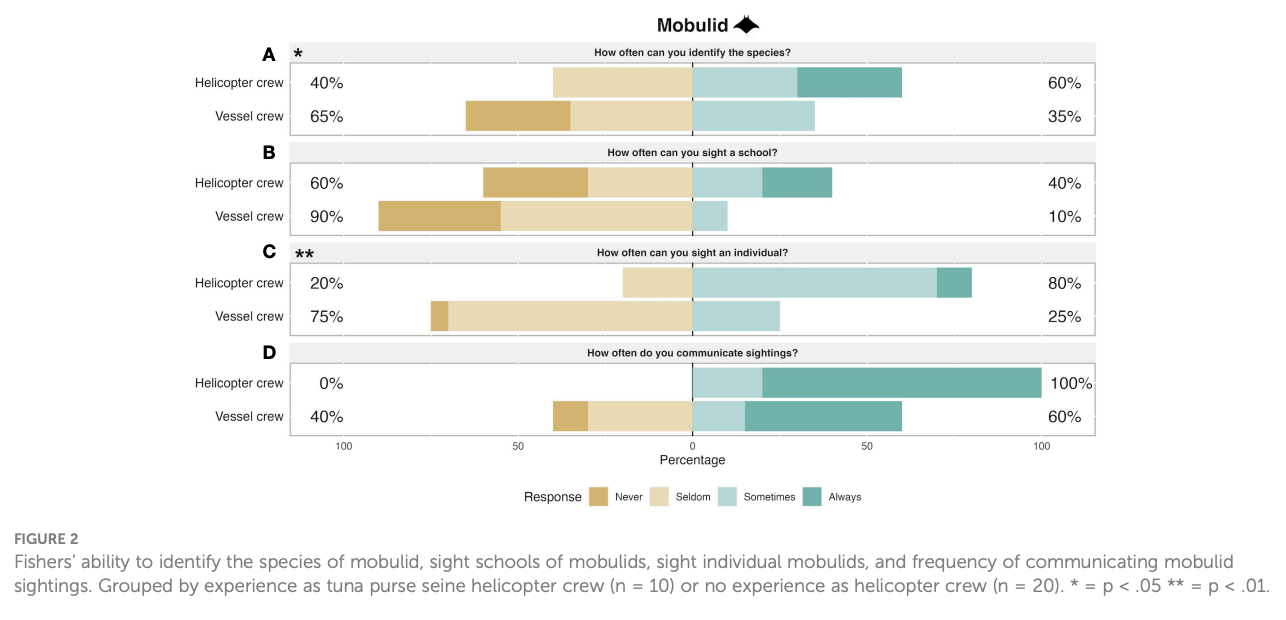
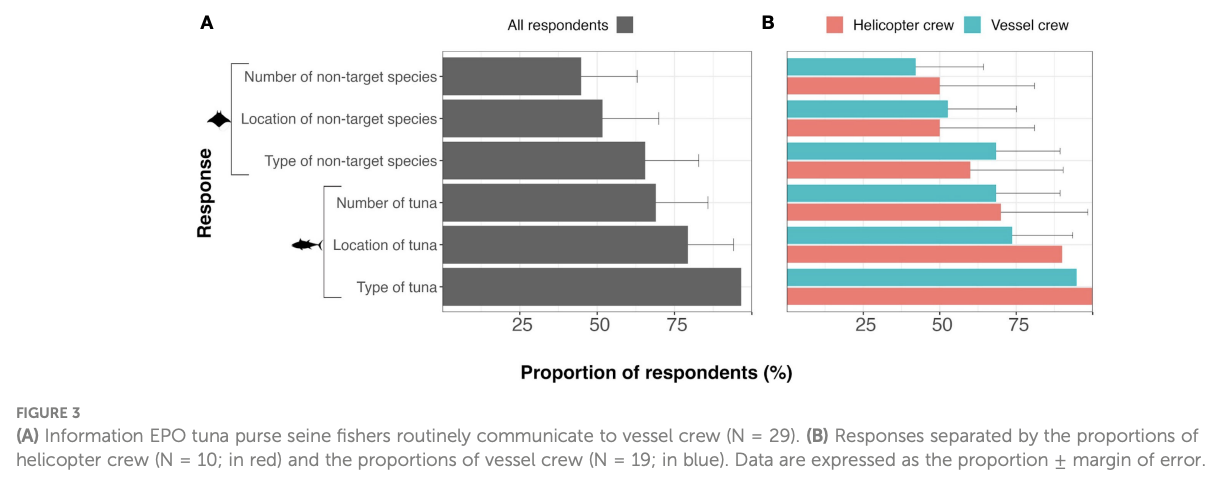
Summary: In tuna fisheries, bycatch of non-target species, particularly vulnerable marine vertebrates like manta and devil rays, is a concern. Efforts to reduce mobulid bycatch mainly focus on post-capture measures. A novel strategy involves communication between tuna purse seine fishing vessels and spotter helicopters to detect mobulids before capture. A survey of 33 individuals operating in the eastern Pacific Ocean suggests helicopter crews can sight and identify mobulids, and they often communicate sightings to vessels. This approach could enable scalable bycatch detection and improve mobulid conservation efforts.
Abstract
“The incidental capture of non-target species (bycatch) in tuna fisheries impacts some marine vertebrates, particularly species with vulnerable life histories such as manta and devil rays (mobulids). There is broad interest in reducing mobulid bycatch in tuna purse seine fisheries, with existing efforts mainly focusing on reducing post-capture mortality rates. We explore a novel potential pre-capture mobulid bycatch avoidance strategy for the tuna purse seine fishery using communication between fishing vessels and associated spotter helicopters. We conducted a survey of tuna purse seine helicopter pilots, spotters, and fishers operating in the eastern Pacific Ocean (n = 33) to ascertain the ability of helicopter crew to detect mobulids prior to capture and communicate bycatch avoidance with vessel crew. Results indicate over half of the helicopter crew report being “always” or “sometimes” able to sight and identify mobulids and that helicopter crew regularly communicate mobulid sightings to the vessel already. Given that an average of 63% of class-6 vessel trips between 2017 to 2022 carried onboard helicopters, our results suggest that helicopter-vessel communication could be feasible and scalable for mobulid bycatch detection, enabling potential bycatch avoidance and early alerts for proper handling protocols. We also identify the potential use of helicopter detection to improve research efforts for mobulid conservation (e.g., data collection of population and habitat observations). This study is the first to investigate the utility of helicopter-vessel communication as a bycatch mitigation strategy for elasmobranchs and identifies research and management directions that could be further investigated to avoid bycatch of mobulids.”
Photos From The Field
Author Affiliations
Department of Fisheries, Wildlife, and Conservation Sciences, Oregon State University
Long Marine Lab, University of California Santa Cruz
Mobula Conservation
Inter-American Tropical Tuna Commission
Instituto Politécnico Nacional
The Manta Trust
Institute of Marine Sciences, University of California Santa Cruz
Ecosystem Science Division, National Oceanic and Atmospheric Administration (NOAA) Southwest Fisheries Science Center
International Seafood Sustainability Foundation
Nicholas School of the Environment, Duke University
Funded by
Thomas G. Scott Publication Funds
Western Division of the American Fisheries Society Small Project Grant
Undergraduate Research in Science & Technology Endowment
Stevenson College Student Research Project Award from the University of California, Santa Cruz
Contribution towards the Manta Trust's Strategic Plan
Goal 2: Strategic Objective 2.1: Relevant RFMOs, fishery collectives, fishing fleets, artisanal fishers, recreational, and subsistence fishers within our geographical focus areas are working towards measures to reduce manta and devil ray capture and bycatch mortality.
Goal 2: Strategic Objective 2.1.1: Effective means to reduce manta and devil ray bycatch and mortality have been identified.
Goal 2: Strategic Objective 2.1.2: Relevant fishers have the knowledge and skills to reduce manta and devil ray capture and mortality.


